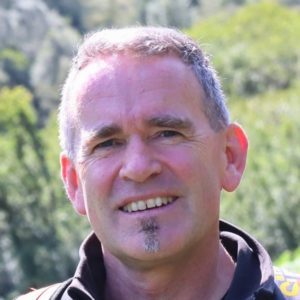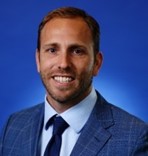Speaker Information: 3rd Kenji Ishihara Colloquium Series on Earthquake Geotechnical Engineering
Base Isolation, Damping Systems, and Soil-Structure Interaction
Speakers and Abstracts
Ian Aiken, Ph.D., P.E.
Principal, Seismic Isolation Engineering, Inc.
Seismic Damping: An Overview of Device Types, Design and Code Considerations
Abstract: Ian will give a snapshot overview of some of the different types of seismic damping devices and applications in the U.S. and internationally, the main aspects of the ASCE 7 and ASCE 41 requirements for structures with damping systems, and discuss some of the engineering and implementation considerations for using seismic dampers that differ from more typical building design, such as analysis requirements, the need for device testing, and the peer review process.
Bio: Ian Aiken is a Principal with Seismic Isolation Engineering, Inc., in Berkeley, California, and has more than 30 years of experience in earthquake, structural and civil engineering. He holds a Bachelor of Engineering degree from the University of Auckland, New Zealand, and Masters and Doctoral degrees in Civil Engineering from the University of California, Berkeley. His particular areas of expertise are seismic isolation and passive energy dissipation for seismic structural control, and the use of nonlinear analysis methods for structural analysis. He has worked on nearly 100 seismic isolation and energy dissipation projects including many notable building, bridge and industrial structures worldwide. For more than 20 years Ian has been extensively involved in the development, testing and implementation of buckling-restrained braces in the U.S., with notable firsts including the first project in the U.S., the first hospital in California and the U.S., the first bridge in the U.S. to use BRBs, and recently the Wilshire Grand Tower in Los Angeles.
Ian has been a member of state and national committees on isolation and energy dissipation, including ASCE, AASHTO and SEAONC committees, and FEMA-BSSC for the NEHRP national provisions.
Jay Love
 Senior Principal, Degenkolb Engineers
Senior Principal, Degenkolb Engineers
Seismic Design with Viscous Dampers: Retrofit Design Strategies
Abstract: One of the largest hospital facilities constructed in recent years in California, the new Sutter Health California Pacific Medical Center Van Ness Campus Hospital opened to patients on March 2, 2019.The $2.1B project produced a 13-story, 989,230 square foot hospital, including patient beds, diagnostic and treatment centers, and subterranean parking. Van Ness Campus Hospital consolidated the acute care services of two older Sutter Health California Pacific Medical Center (CPMC) campuses to create their flagship San Francisco hospital.
The structural system features a steel moment resisting frame with supplemental viscous wall dampers to reduce earthquake forces. Originally developed and implemented in Japan over the past three decades, this project marked the first application of viscous wall dampers in the United States. Through testing and nonlinear response history analysis, viscous wall dampers are expected to absorb nearly 90 percent of the earthquake energy at the Design Earthquake level.
Bio: Jay Love has more than 40 years of experience, including master planning, structural design, seismic evaluation, and retrofit design. He has considerable expertise in designing specialized buildings, particularly large and complex healthcare facilities. Jay’s notable projects include the new design of the new Sutter Health California Pacific Medical Center (CPMC) Hospital at Van Ness and Geary and the Kaiser Permanente, Los Angeles Replacement Hospital. Jay has overseen and served as project mentor on numerous healthcare projects for Stanford Health Care ValleyCare Medical Center – Pleasanton and Livermore, Stanford Hospital, Catholic Healthcare West, Kaiser Foundation Hospitals, Dignity Health, and Sutter Health.
Aaron Malatesta, P.E.
Structural Engineer
Seismic Design with Viscous Dampers: Retrofit Design Strategies
Abstract: Structural engineers have been using viscous dampers to protect new and existing building structures from seismic excitation for almost 30 years. There are a number of different types of damping applications, and the primary objective of this presentation will be to demonstrate the basic principles for supplemental viscous damping and how they can be applied for seismic retrofit of pre-Northridge steel moment frames and nonductile concrete moment frames. The presentation will include historical background and an overview of preliminarydesign concepts and simplified design procedures. Examples will be presented and alternative methods for construction detailing will be discussed.
Bio: Aaron Malatesta, P.E. is a structural engineering consultant in the field of energy dissipation devices and advanced seismic design. Mr. Malatesta graduated from Stanford University with a Masters degree in Structural Engineering. He has practiced structural engineering for consulting firms focused on both buildings and transportation infrastructure. As a licensed professional engineer in the state of California, he has been involved in the design and retrofit of a number of different types of structures. He has worked as a technical director for a viscous damper manufacturer leading the development of technical publications, management of research and development activities, and working with engineers to improve the performance of structures using viscous damping systems. He is actively involved in ASCE 7 and ASCE 41 committees for seismic isolation systems and energy dissipation devices.

